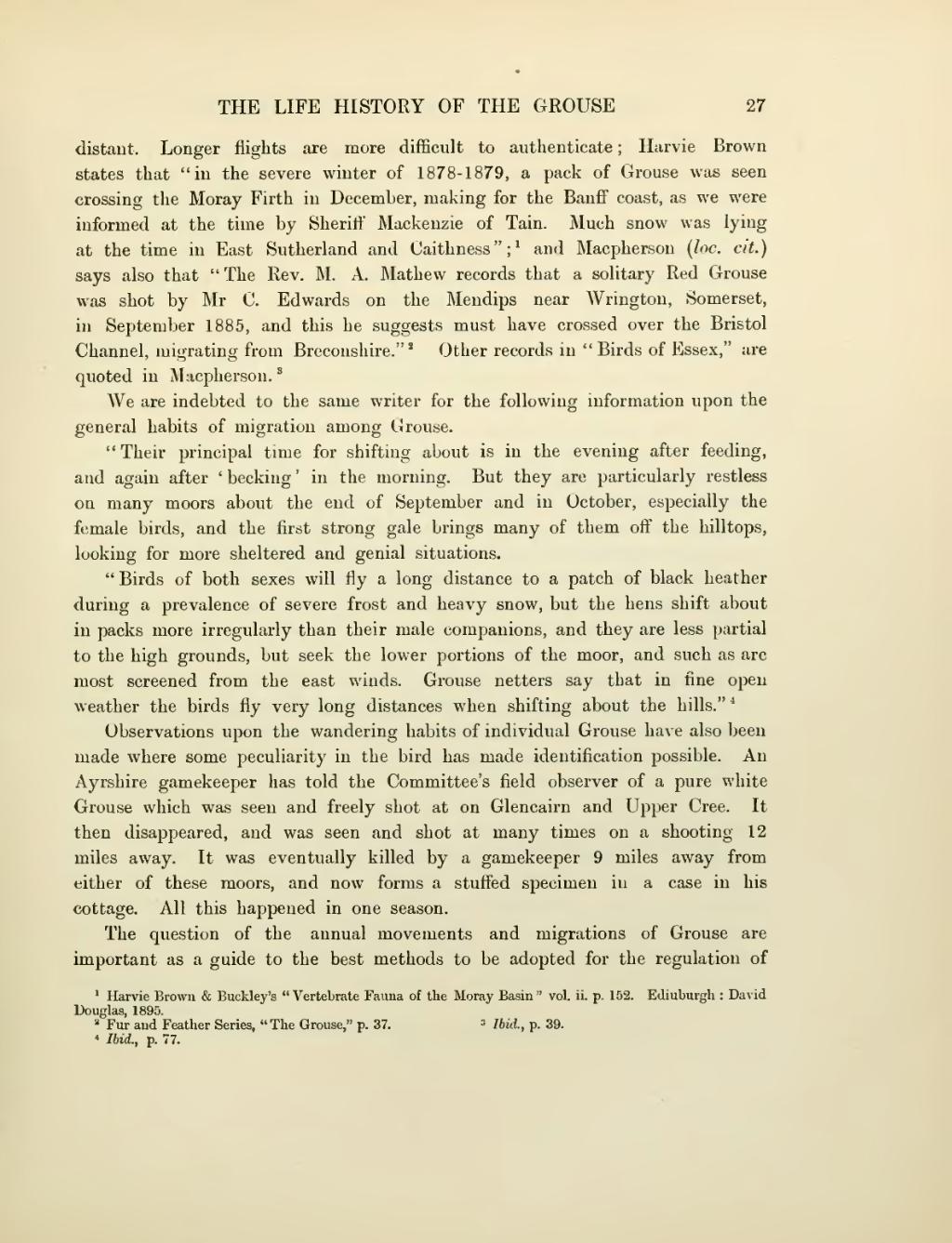distant. Longer flights are more difiicult to authenticate; Harvie Brown states that "in the severe winter of 1878-1879, a pack of Grouse was seen crossing the Moray Firth in December, making for the Banff" coast, as we were informed at the time by Sheriff Mackenzie of Tain. Much snow was lying at the time in East Sutherland and Caithness";[1] and Macpherson (loc. cit.) says also that "The Rev. M. A. Mathew records that a solitary Red Grouse was shot by Mr C. Edwards on the Mendips near Wrington, Somerset, in September 1885, and this he suggests must have crossed over the Bristol Channel, migrating from Breconshire."[2] Other records in "Birds of Essex," are quoted in Macpherson.[3]
We are indebted to the same writer for the following information upon the general habits of migration among Grouse.
"Their principal time for shifting about is in the evening after feeding, and again after 'becking' in the morning. But they are particularly restless on many moors about the end of September and in October, especially the female birds, and the first strong gale brings many of them off the hilltops, looking for more sheltered and genial situations.
"Birds of both sexes will fly a long distance to a patch of black heather during a prevalence of severe frost and heavy snow, but the hens shift about in packs more irregularly than their male companions, and they are less partial to the high grounds, but seek the lower portions of the moor, and such as are most screened from the east winds. Grouse netters say that in fine open weather the birds fly very long distances when shifting about the hills."[4]
Observations upon the wandering habits of individual Grouse have also been made where some peculiarity in the bird has made identification possible. An Ayrshire gamekeeper has told the Committee's field observer of a pure white Grouse which was seen and freely shot at on Glencairn and Upper Cree. It then disappeared, and was seen and shot at many times on a shooting 12 miles away. It was eventually killed by a gamekeeper 9 miles away from either of these moors, and now forms a stuffed specimen in a case in his cottage. All this happened in one season.
The question of the annual movements and migrations of Grouse are important as a guide to the best methods to be adopted for the regulation of
- ↑ Harvie Brown & Buckley's "Vertebrate Fauna of the Moray Basin" vol. ii. p. 152. Edinburgh: David Douglas, 1895.
- ↑ Fur and Feather Series, "The Grouse," p. 37.
- ↑ Ibid., p. 39
- ↑ Ibid., p. 77
